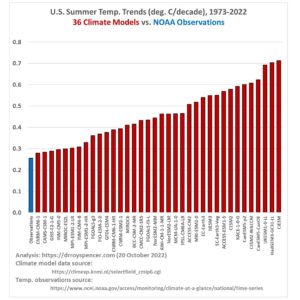by D. MCCarthy, Mar 28, 2023 in ClilmateChangeDispatch
What does it take to avert the end of the world?
For most of human history, this has been a question for religion. And the answer has usually been that human beings must repent of their sins.
They must surrender some comfort and luxury to appease angry gods. In primitive times, worshippers might sacrifice a bull — or even a human being. [emphasis, links added]
Today climate science provides an end-times prophecy that works in much the same way as the religious apocalypticism of old.
Religion enchants the world, lending spiritual significance to every part of life. Climate change makes everything from charging your iPhone to skipping beef for dinner a potentially salvific act.
Cattle once again have to be sacrificed — they emit too much methane and CO2.
And the dietary laws that climate science prescribes are as exacting as those of any religion. Every day is a fast day when you subsist on tofu and insect protein.
Purity and ritual cleanliness are religious concepts that find a remarkable parallel in the way of life that climate science promotes.
By default, Apple’s phones are now set to “clean energy charging” mode, which takes longer to recharge the battery but contributes in however small a way to saving us from the weather.
Well-educated liberals laugh when a televangelist claims a hurricane is God’s punishment for America’s acceptance of homosexuality.
Yet liberals also believe the weather is a moral force, punishing Americans for the sins of capitalism.
…
…


 This second business-as-usual prediction was that there would be 1.8 C° warming from preindustrial times to 2030. Deducting the 0.45 C° warming up to 1990, the prediction amounted to 1.35 C° or about 0.34 C°/decade. Thus, IPCC predicted 0.3-0.34 C°/decade medium-term warming. However, only 0.14 C°/decade has occurred since 1990
This second business-as-usual prediction was that there would be 1.8 C° warming from preindustrial times to 2030. Deducting the 0.45 C° warming up to 1990, the prediction amounted to 1.35 C° or about 0.34 C°/decade. Thus, IPCC predicted 0.3-0.34 C°/decade medium-term warming. However, only 0.14 C°/decade has occurred since 1990